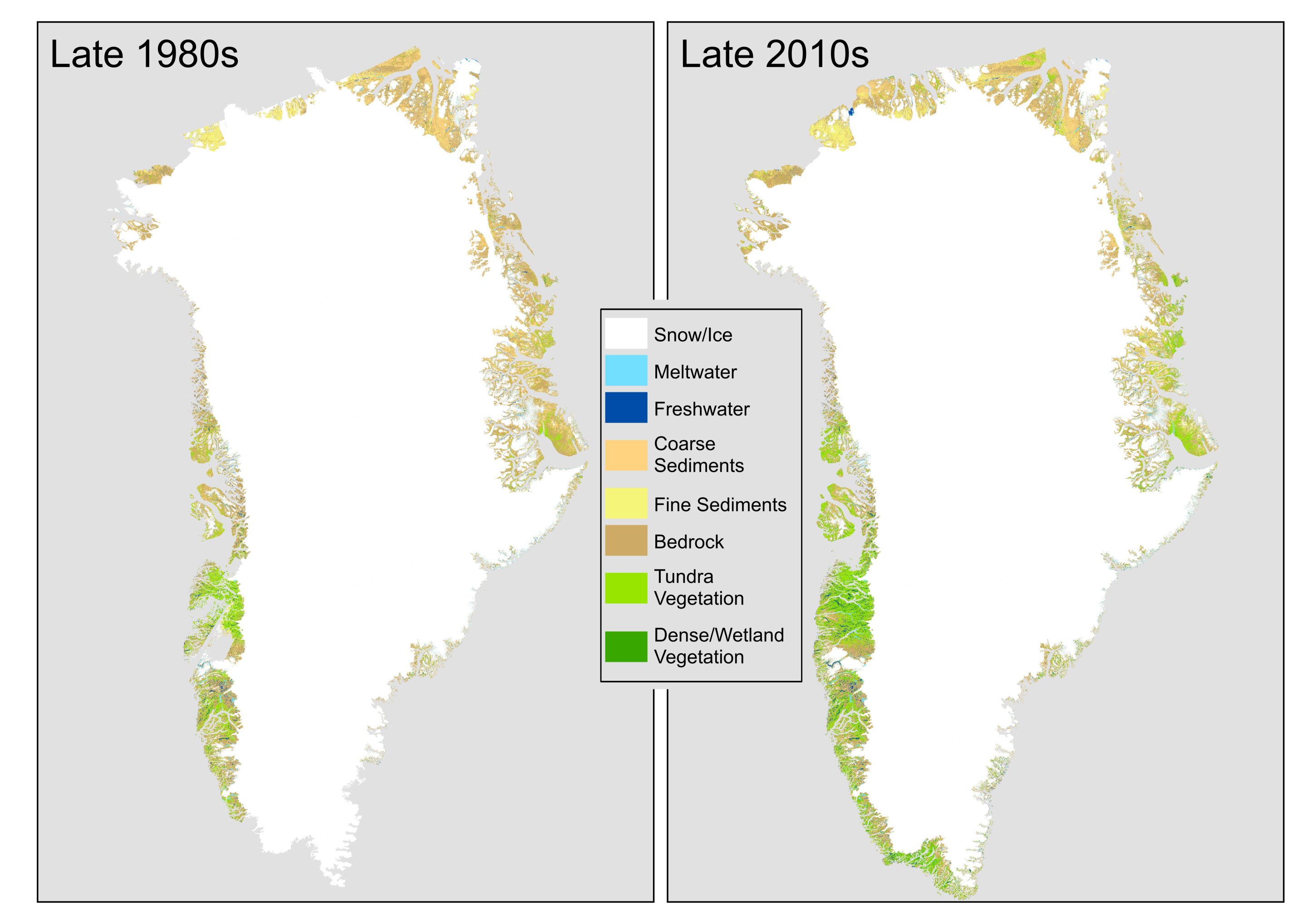From White to Green: Witnessing Climate Change in Greenland
Follow us on Google News (click on ☆)

Illustration Image Pixabay
Researchers from the University of Leeds have been studying Greenland, the world's largest island, using historic satellite archives that date back to the 1980s. They observed not only a significant reduction in ice cover but also a marked increase in vegetation, which more than doubled over the study period. However, this growing "greenness" should not necessarily be seen as a positive development. It is a symptom of an increasing ecological imbalance induced by rising temperatures.
Since the 1970s, Greenland has been warming at a rate twice that of the global average, with tangible consequences for its landscape. Ice loss, primarily concentrated around current glaciers and in certain specific regions, gives way to bare ground, wetlands, and shrublands. This phenomenon, beyond altering the composition of the soil, also influences the surface temperature of the earth, accelerates greenhouse gas emissions, and disrupts the landscape, notably through the thawing of permafrost.
The loss of ice affects the albedo, that is, the Earth's surface reflectivity, leading to further warming. Areas once white and reflective, which reflected solar energy back into space, give way to dark rocks or bodies of water, which absorb more heat. Concurrently, the increase in wetlands, particularly in eastern and northeastern Greenland, intensifies methane emissions, a powerful greenhouse gas.

When comparing soil types between the 1980s and the 2010s, it is noticeable that green areas, i.e., where plants grow, have increased, especially in the southwest and northeast.
Credit: University of Leeds
Researchers warn that these changes are not without consequences for indigenous populations, whose traditional subsistence practices depend on the stability of these fragile ecosystems. The expansion of vegetation, coupled with the retreat of glaciers and the ice cap, also alters the flow of sediments and nutrients to coastal waters, with potential repercussions on marine biodiversity.
The retreat of ice in Greenland is an alarming indicator of global warming, significantly contributing to the rise in sea levels. This phenomenon, extending beyond Greenland's borders, underscores the urgency of adopting measures to limit greenhouse gas emissions and preserve the natural balances of our planet.